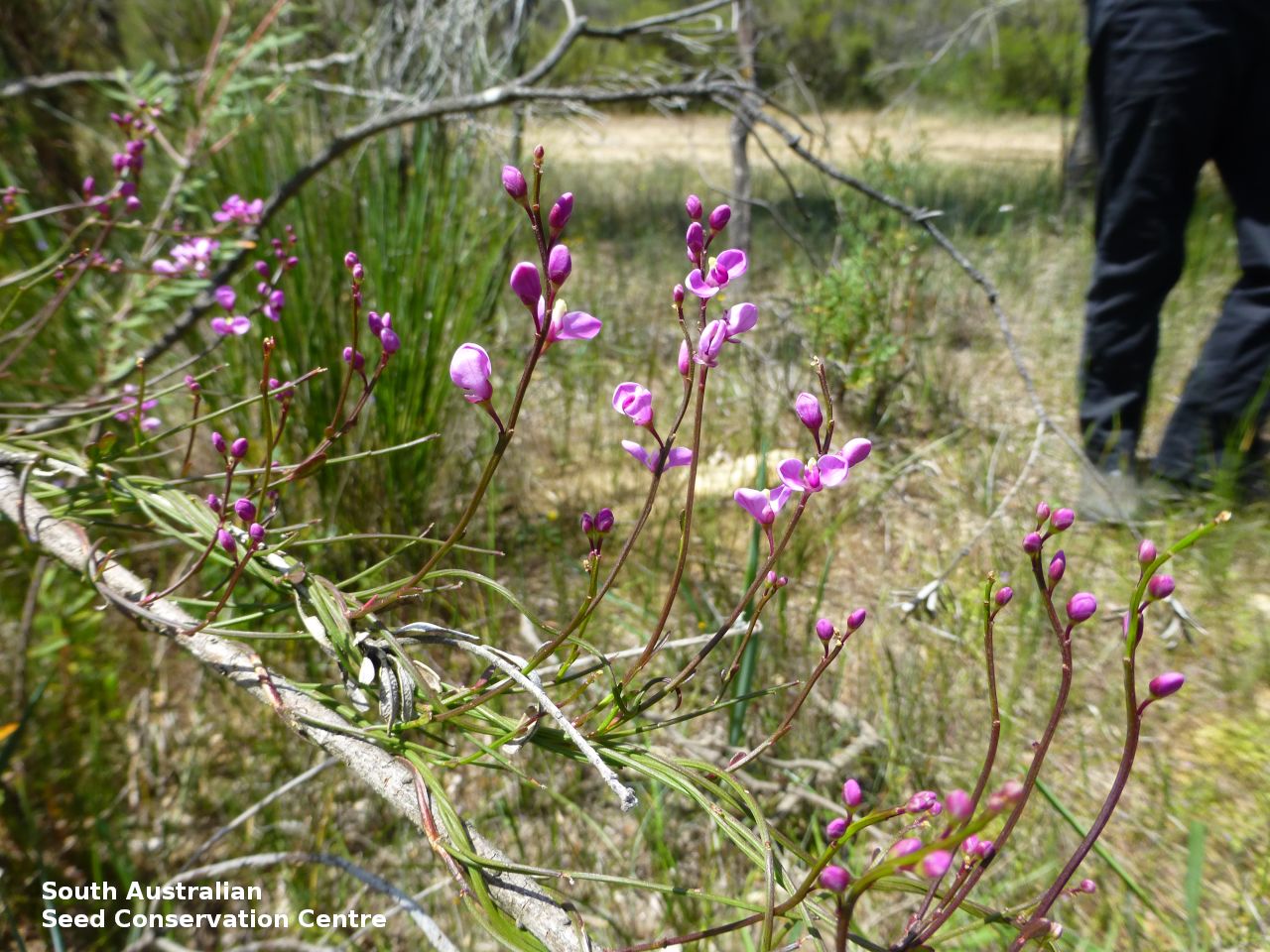
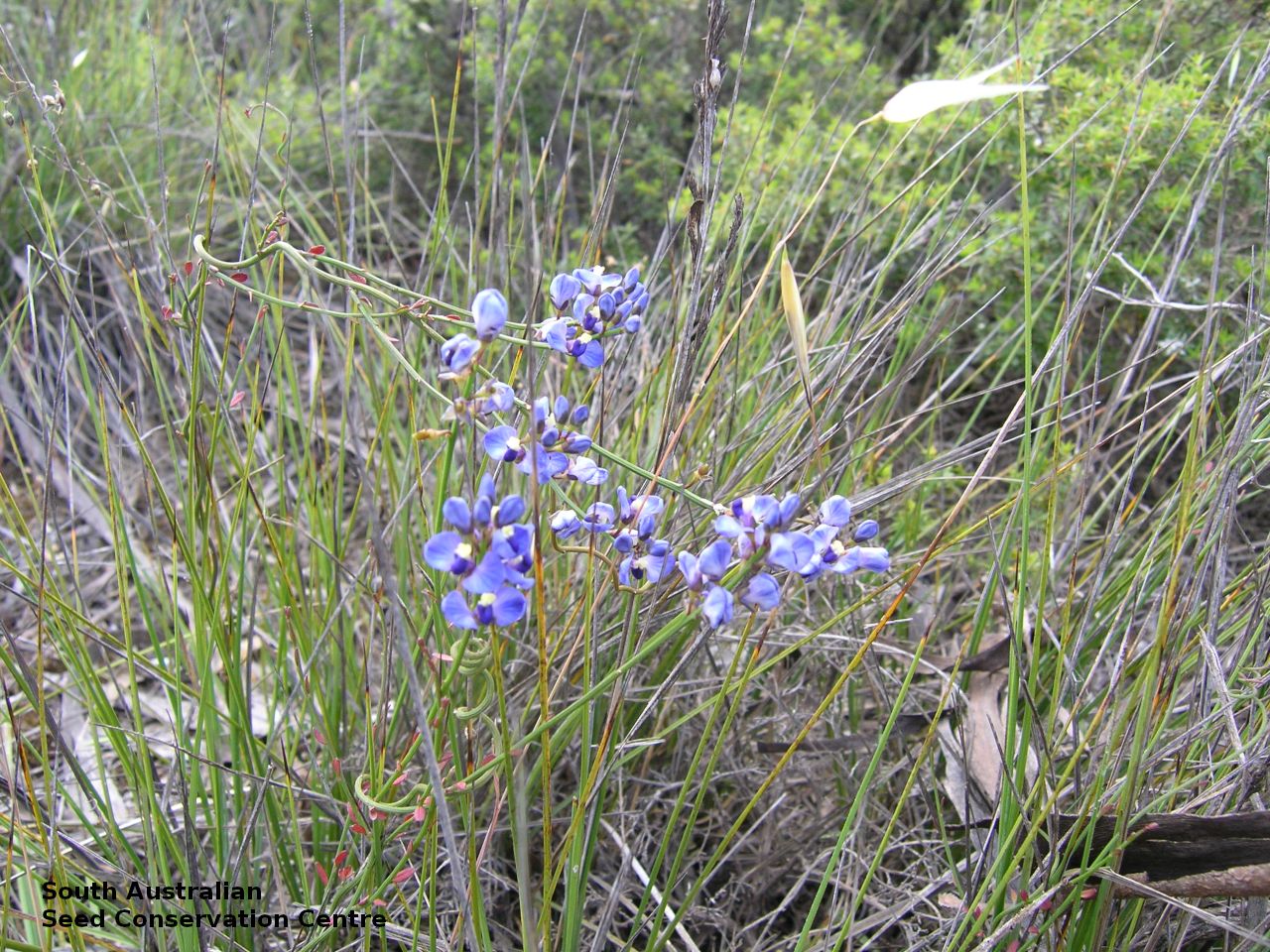
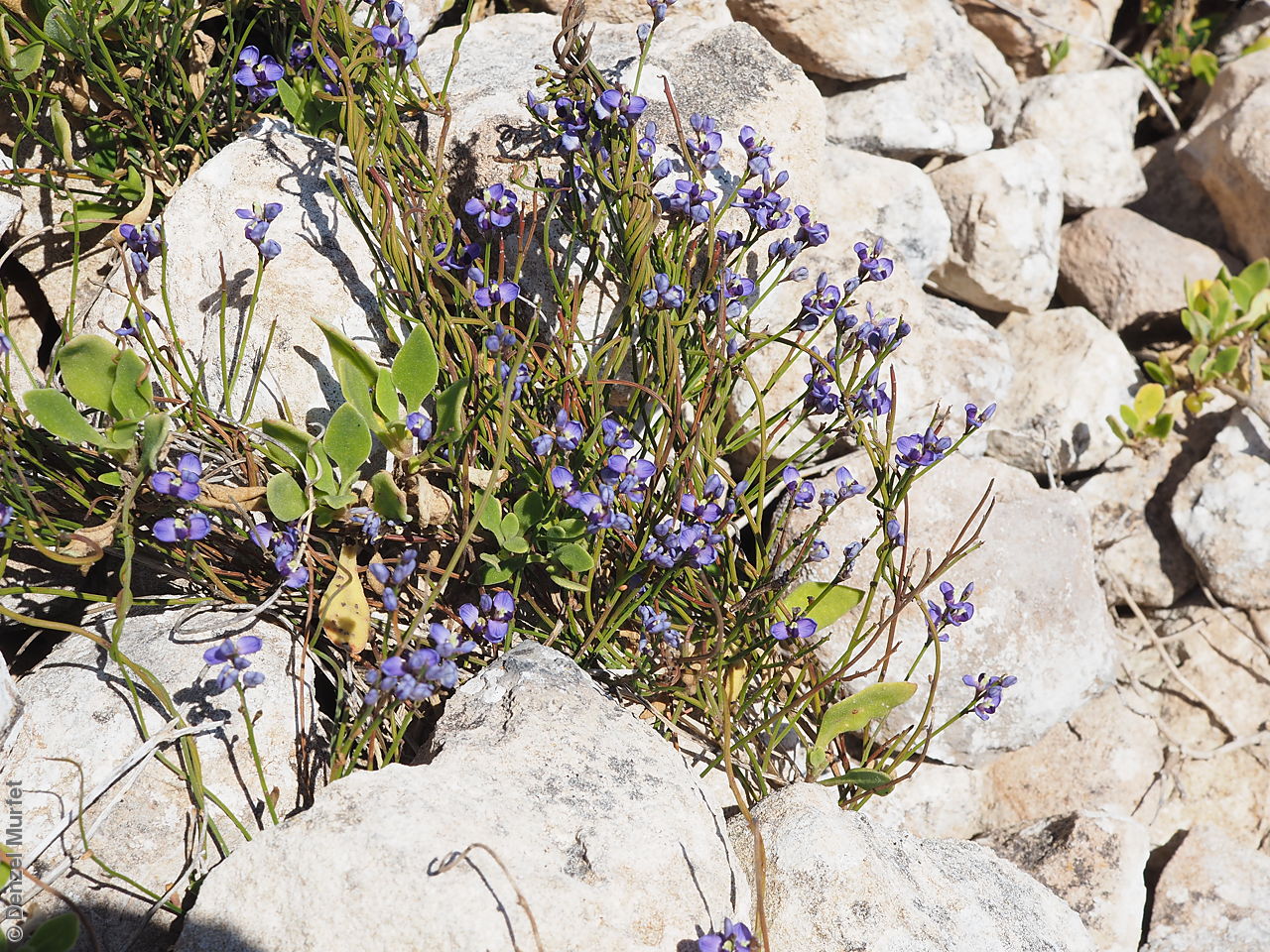
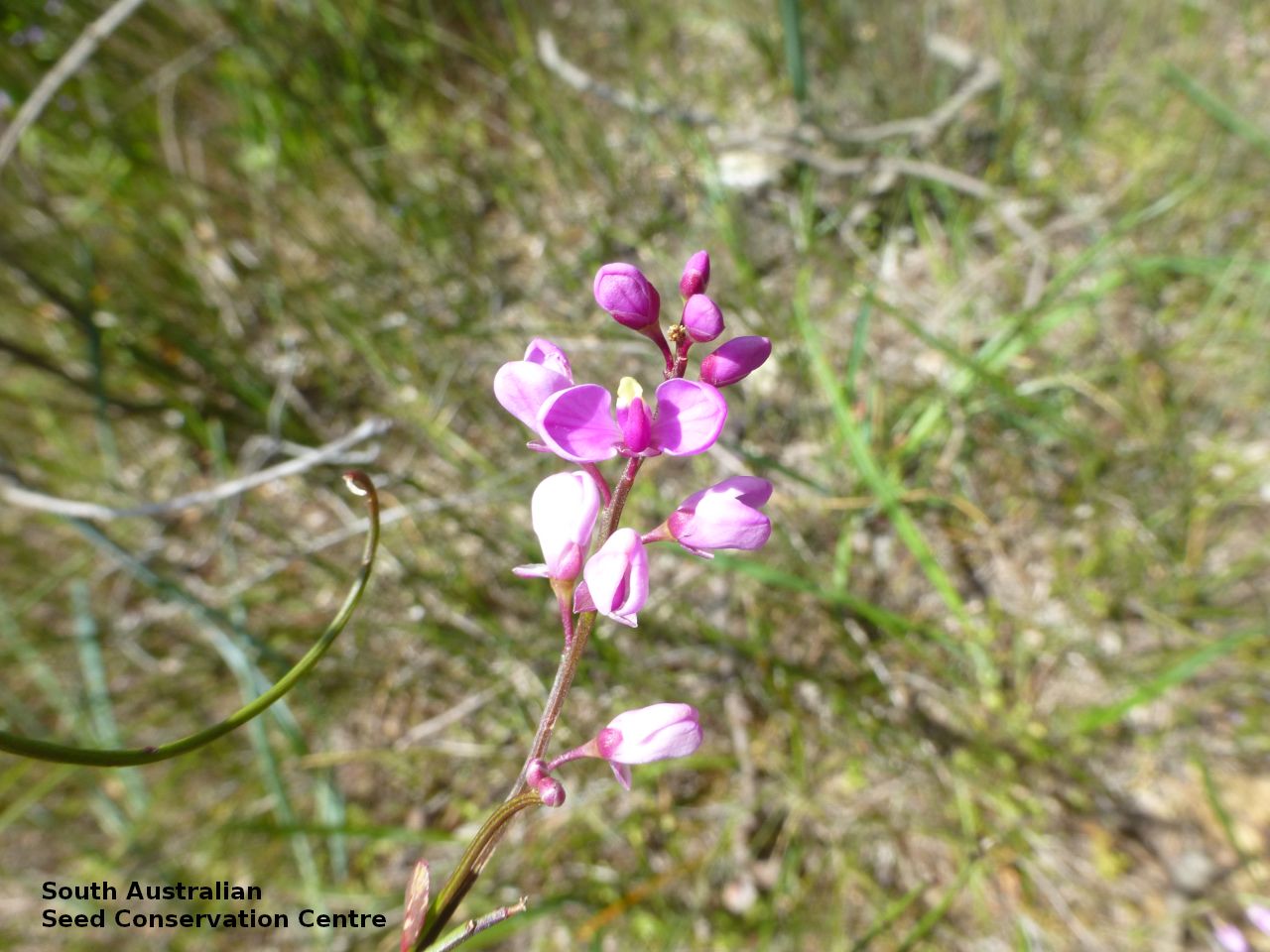
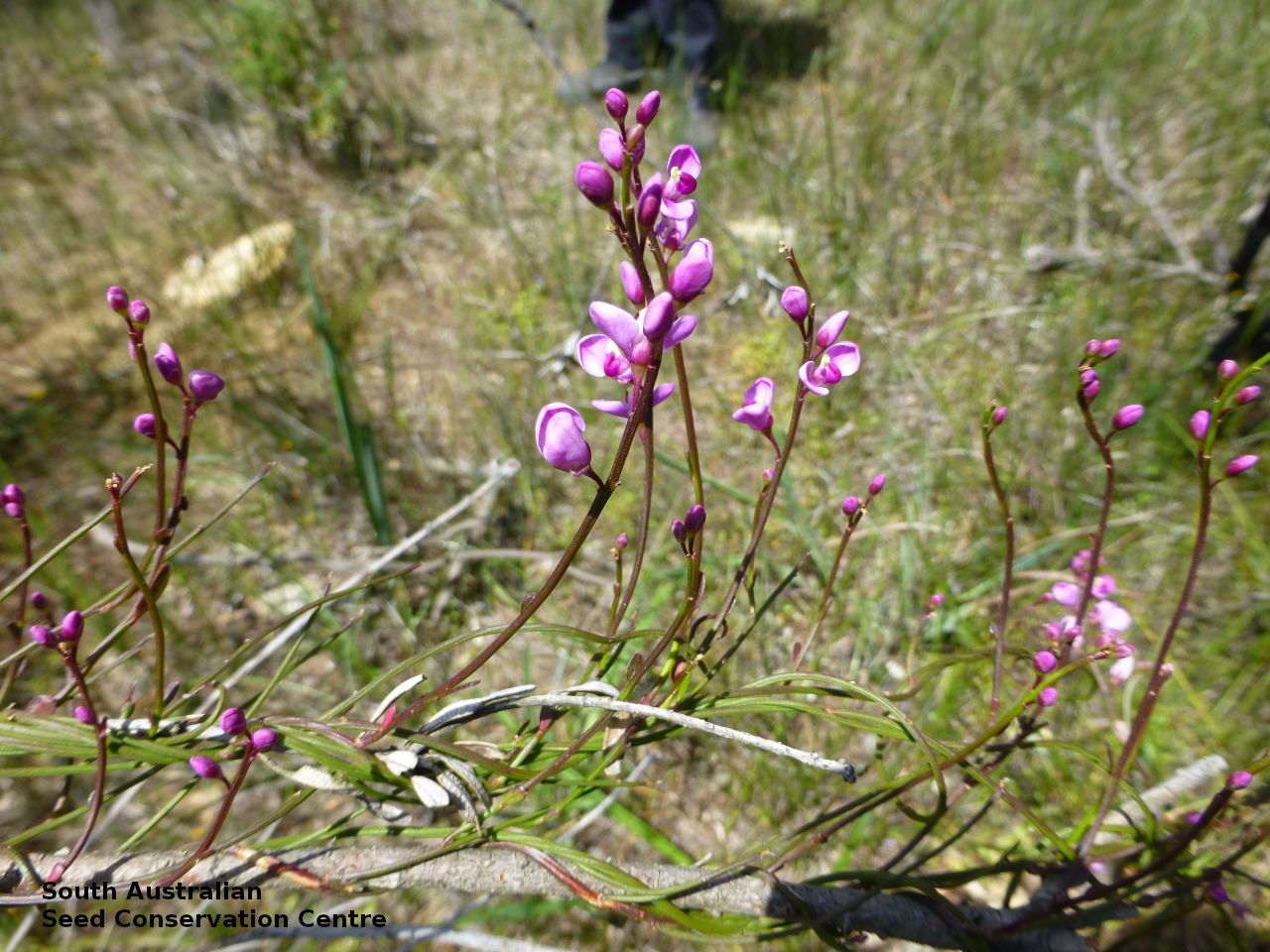
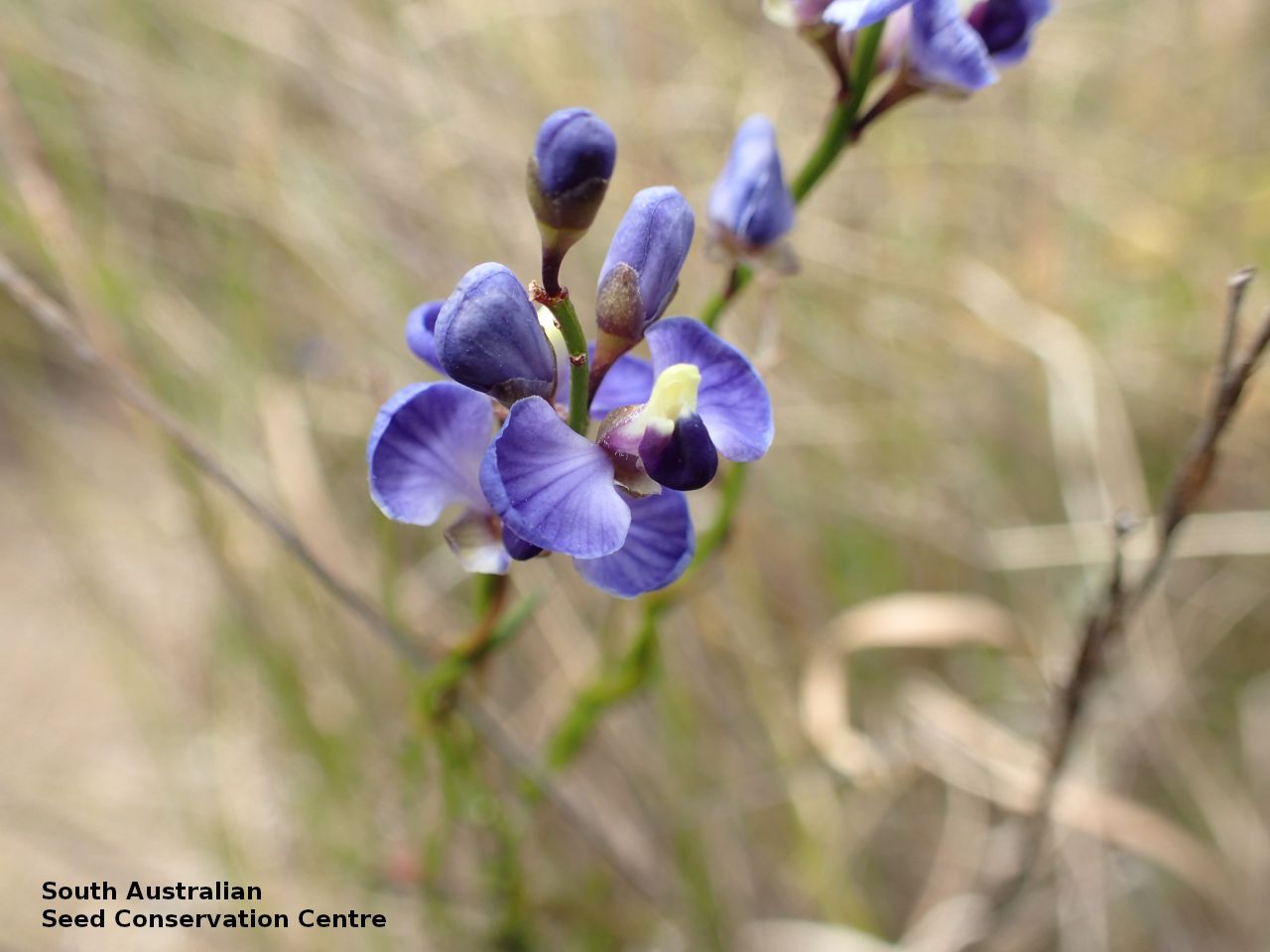
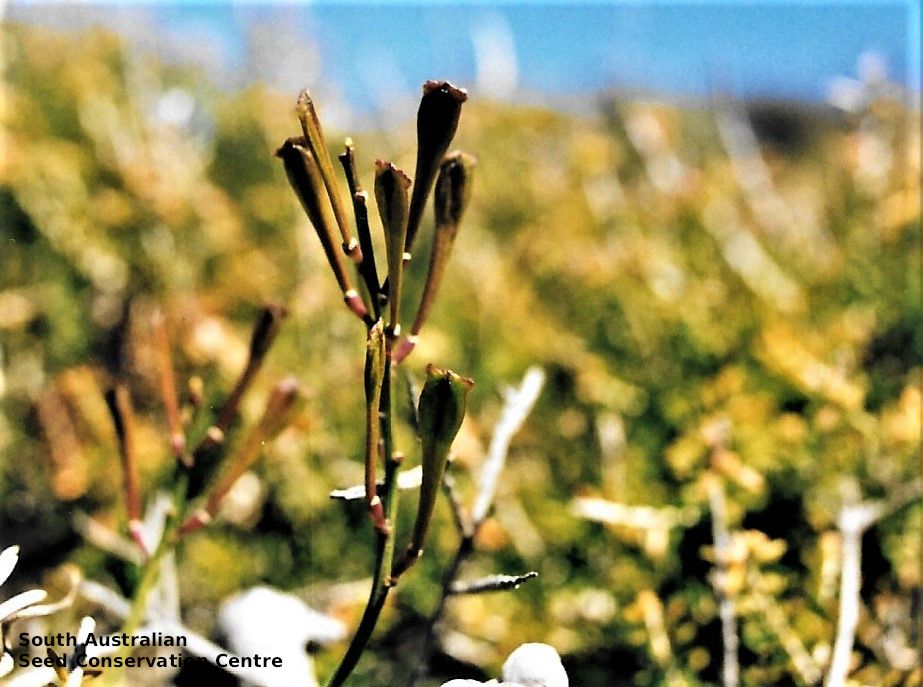
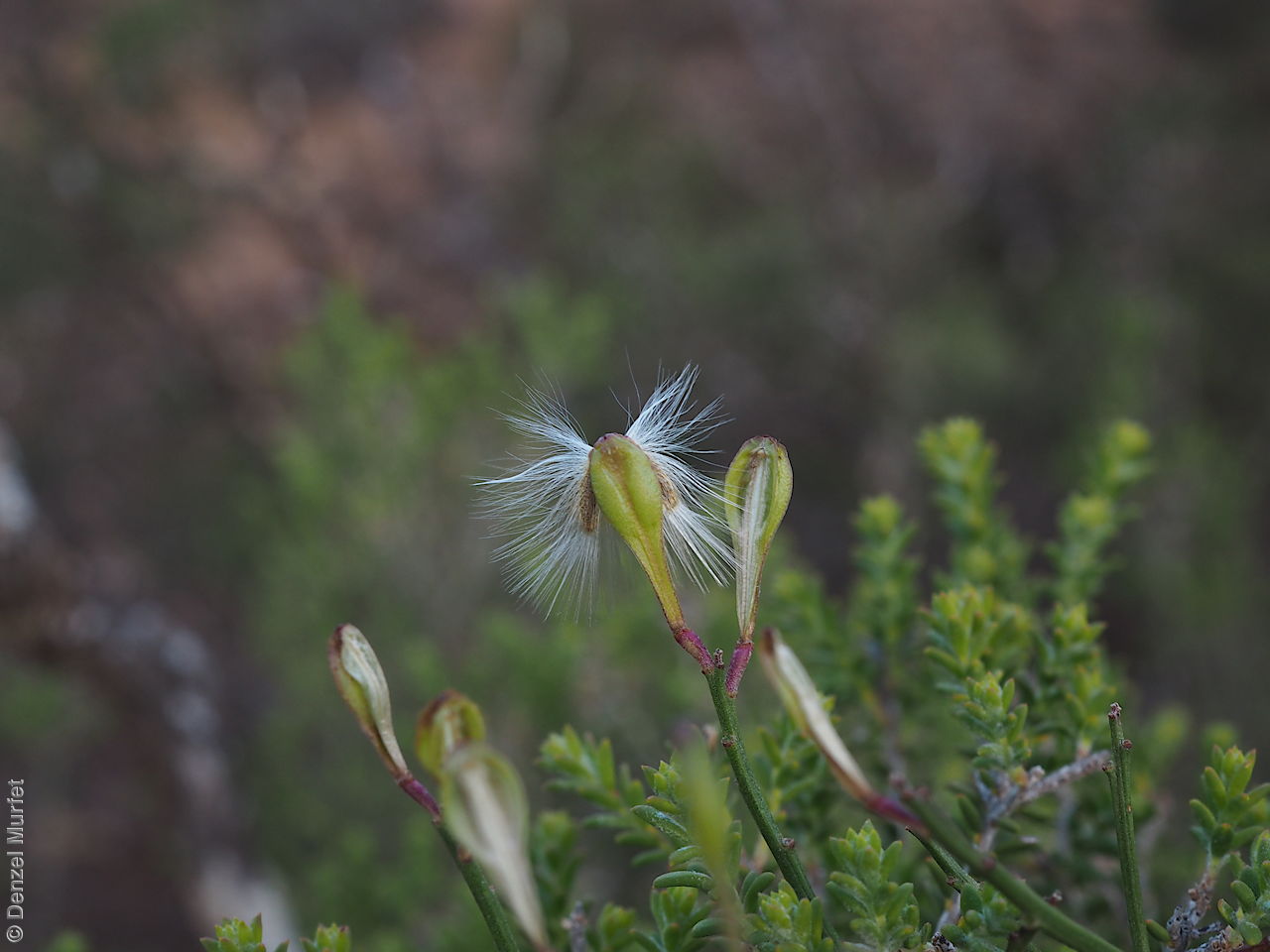

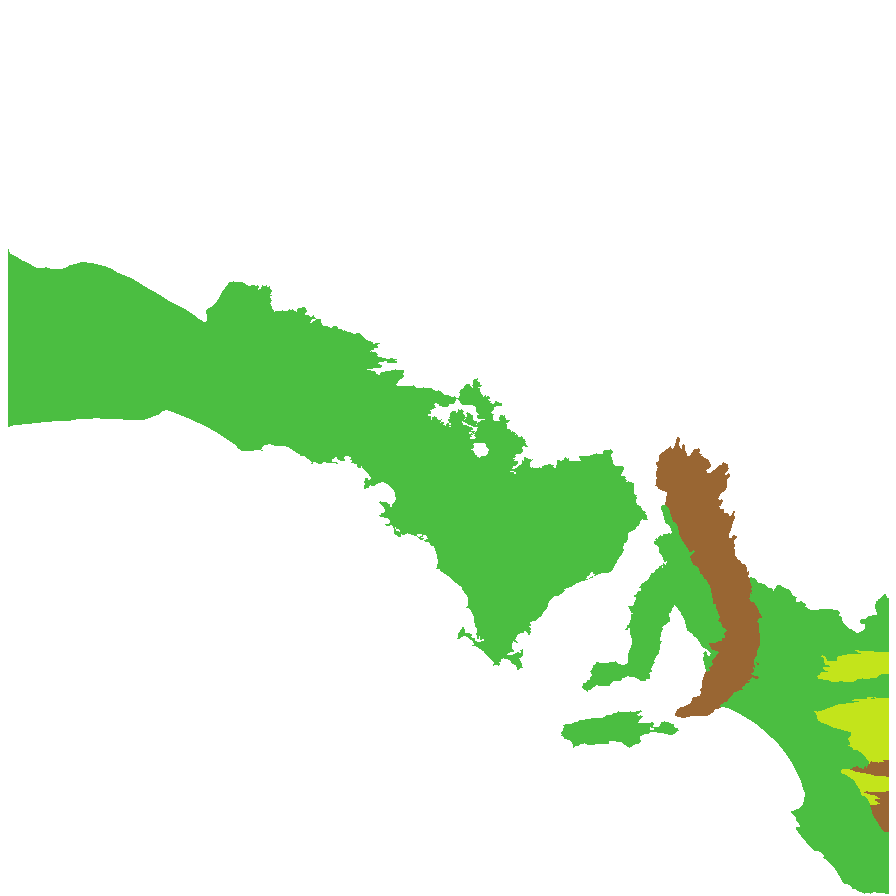
Botanical art
Prior names
Comesperma ciliatum
Bredemeyera ciliata
Bredemeyera volubilis
Common names
Twining Milkwort
Love Creeper
Etymology
Comesperma from the Greek 'kome' meaning hair of the head and 'sperma' meaning seed, referring to the seeds covered in long hairs. Volubile from Latin meaning to turn, revolve or twine, alluding to the species twining habit.
Distribution and status
Found in the southern part of South Australia from the Nullarbor to the lower South-east, growing in a range of habitats, from heathland and woodland communities to sclerophyll forest and coastal heath. Also found in all states except in the Northern Territory. Native. Common in South Australia. Uncommon in Queensland. Common in the other states.
Herbarium regions: Nullarbor, Eyre Peninsula, Northern Lofty, Murray, Yorke Peninsula, Southern Lofty, Kangaroo Island, South Eastern, Green Adelaide
NRM regions: Adelaide and Mount Lofty Ranges, Alinytjara Wilurara, Eyre Peninsula, Kangaroo Island, Northern and Yorke, South Australian Murray-Darling Basin, South East
AVH map: SA distribution map (external link)
Plant description
Slender sparsely leaved or leafless climbing perennial shrublet with twining stems covered in minute tubercles and simple hairs at the nodes. Leaves absent or few, linear to ovate, alternate to 8 cm long and 25 mm wide, rarely pubescent with hairs on the mid-vein of the lower surface and margins, young leaves sometimes pubescent, margins loosely recurved, apex acute to obtuse, petiole swollen near the base. Inflorescences are axillary spike to 7 cm long, with blue or pink flowers. Outer sepals mostly free, to 2 mm long, ovate to widely ovate, 2 lower overlapping, apex rounded to retuse. Wing sepals to 6.5 mm long, broadly ovate, contracting abruptly to a claw. Lateral petals to 5.5 mm long, spathulate to oblong, joined to the keel for about half their length, simple hairs in the lower half on the outside and inside of free margins and at the junction with the keel. Keel petals to 5 mm long, with 2 oblong lateral lobes. Vestigial petals on either side of the keel base, joined to outside of the tube above the base. Flowering between August and February. Fruits and obovate or cuneate capsule, tapering to base, to 21 mm long. Seeds narrowly elliptic to 4.5 mm long covered with long silky hairs to 1 cm long.
Seed collection and propagation
Collect seeds between October and April. Collect capsules that are turning brown and being to split with fluffy seeds. Place the capsules in a tray and leave to dry for a week. Capsules will split and dislodge the seeds. Use a sieve to separate the unwanted material. Store the seeds with a desiccant such as dried silica beads or dry rice, in an air tight container in a cool and dry place.